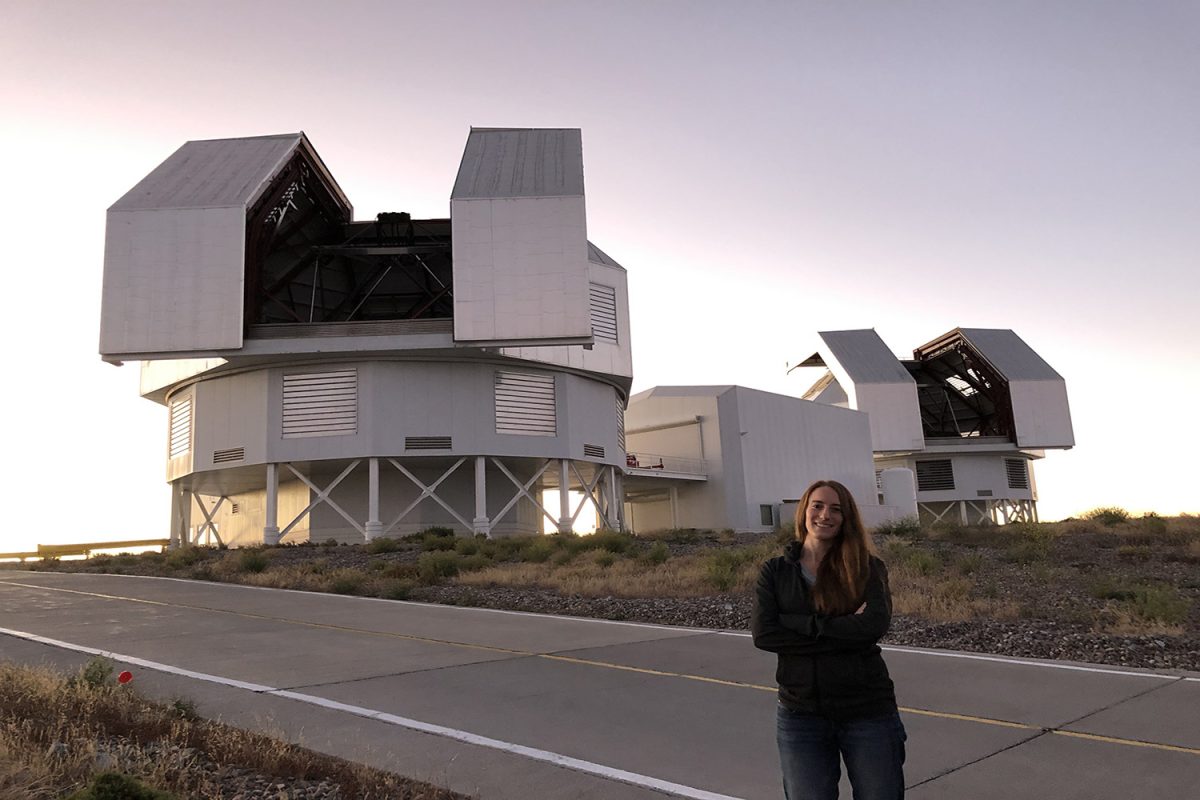When Maria Drout graduated from the University of Iowa in 2010 with a degree in physics and astronomy, she never could have expected that over a decade later, she’d be making an international name for herself and the department.
Drout, now an assistant professor in the Department of Astronomy and Astrophysics at the University of Toronto, partnered with Ylva Götberg, assistant professor at the Institute of Science and Technology Austria, to conduct research that would later be acknowledged on the 2024 Time100 Next list.
Now in its fifth year, the Time100 Next list was created to recognize young influential individuals in a variety of fields, including science, music, and writing. Those who are selected are poised in a position to follow in the footsteps of a former Time100 individual. Priyamvada Natarajan influenced Drout and Götberg.
The field of astrophysics remains a complex topic in science, particularly the evolution of some stars. The focus that Drout and Götberg have is on hot helium stars that have lost their hydrogen envelopes. The mystery is how they haven’t been consumed by other surrounding partner stars.
Drout, an observer, and Götberg, a theorist, began their collaboration in 2017 to create a detailed model that predicted what was happening with these mysterious stars. Their discoveries have produced brand-new data that had previously been misunderstood or not observed altogether.
“At this point, we’ve found a bunch [of stars], which is awesome, but now we want to use them to learn about how stars evolve and how they influence stuff going on around them,” Drout said.
The discovery has very important connections to scientists’ understanding of other types of stars and celestial bodies in the universe, including supernovae and neutron stars — stars that can become unstable and merge when close together, Götberg said.
“I think it’s quite inspirational,” Götberg said. “Maria was working with the supernova explosions that are free of hydrogen. And it seemed very indicative from the research that these stars should exist, but in the stellar astrophysics realm, we didn’t have this counterpart, so it felt like a mystery and that there was something missing.”
Drout and Götberg’s work contributes to the understanding of the stellar population in astronomy and physics, especially in understanding where the light is coming from and why these extremely hot stars can exist.
“The research unlocks a lot,” Drout said. “From an understanding of the universe right now, this phase in the evolution of stars should happen to a lot of stars, and it’s really pivotal for understanding supernova explosions, which create most of the heavy elements of the universe. This also helps with understanding distant galaxies and how they formed.”
Drout and Götberg found out they were on the Time100 Next list in early October, but they didn’t fully realize it was real until later on. They both went through phases of shock and disbelief.
“It was very surprising,” Drout said. “We knew that we were very proud of our work and thought it was very impactful, but it’s this sort of new perspective when it’s being acknowledged on this scale. We were very honored, as well as shocked.”
Later on in their research, Drout and Götberg plan to do theoretical research to complement and improve the models based on their observations. The recognition on the Time 100 Next list will help them receive more acknowledgment in the science world.
RELATED: UI researchers receive over $700,000 grant from NASA
“It was also really nice when I realized that they decided to emphasize science in that list and the importance of scientific research,” Götberg said. “It was actually quite inspiring to know that we were included.”
Götberg and Drout both have a background in studying massive stars and connected at a conference in New Zealand in 2016, where Götberg was presenting her thesis. Their research blended perfectly to continue understanding these abnormal stars and their complexities.
Drout and Götberg both have conducted research at the Carnegie Observatories in Pasadena, California, in the astronomy and physics fields.
“I felt very supported at Carnegie Observatories, and I felt trusted with my scientific knowledge, that I would be capable of pursuing a new scientific direction,” Götberg said. “They provided me with great resources, as well.”
Drout, as a graduate of the UI in physics and astronomy, felt very influenced and supported by her professors as she went into a field of research.
“The program there was phenomenal, both in terms of the education, and I was able to start doing my research early on, which is a really amazing opportunity,” Drout said. “It really shaped my view of research and helped me know I wanted to pursue it as a career. I still use a lot of those skills that I learned at Iowa.”
In their collaboration as young researchers, Götberg and Drout found an important common ground and are very grateful for the opportunities that have been presented to them, especially through the Time100 Next list.



